
Celebrate a Safe Diwali in the Pandemic
Celebrate a Safe Diwali in the Pandemic
Celebrate a Safe Diwali in the Pandemic

The festival of Diwali is the conquest of good over evil. The year 2020 had joined hands fo all in the world to fight the only virus that created a menace in every one of us on this planet earth. Nevertheless, we were all together on this Pandemic in our will to overcome the evil. Besides in the verge of outsmarting the Corno pandemic. Similarily, We are together in this ubiquitous generic times together.
Indians worldwide can never stay indoors on a fine day like Diwali. Staying Indoors on a festive day like Diwali is inconceivable for any Indian born citizen worldwide. Now with the government announcing a ban on crackers. Yet another blow to the good times. We are nevertheless accepting the rule of the game with the same spirit of pride in wiping the coronavirus epidemic. Nevertheless, We see nostalgic of the past Diwali with tears in all of us.
We Stand on guard against any evils that may further ruin the present scenario. Making no chances for further spread the deadly virus any further. Bangalore Secretary Services is all set to Celebrate a Safe Diwali in the Pandemic.
Celebrate a Safe Diwali in the Pandemic
How to Celebrate a Safe Diwali in the PandemicPandemic with loved ones and Office colleagues?
Celebrate a Virtual Safe Diwali in the Pandemic
- Safe Dsitanceing with relatives and friends.
- Video conferencing with office colleagues.
- Back to age-old methods of sending Archies Gifts & Greetings
( seems very old 90 s style )
- Games on Zoom call can do the magic with office colleagues.
- The magic of celebrations blossoms only when all are together in a virtual zoom call on a Diwali day.
Celebrate Diwali with the most creative Diwali gifts.
- Sweets of the native origin shared with office colleagues. Bengalis with Kolkatta sweets. Tamils with Native Tamil sweets Authentic Tirunelveli Halwa and Sweets.
- Celebrate a Safe Diwali in the Pandemic with Home foods shared with loved ones.
- Celebrate a Safe Diwali in the Pandemic with No crakers but with laughter and joy with family members.
Sanitizing the house before Celebrating Diwali

House cleaning is an age-old tradition on an auspicious day like Diwali to keep the evil out and to welcome the good inside the house.
Diwali also called as Deepavali is a propitious celebration observed on the new moon night of Kartik month (autumn season) in India. It was the day when Lord Rama came back to Ayodhya with goddess Sita after vanquishing the demon king Ravan. This day acknowledged as the victory of wisdom over darkness and good over evil. This festival is a five days long celebration.
People all across the country believe in preparing and cleaning their house and offices. Besides, to embrace positivity on this day. Cleaning the house and the Office is a day to day work, but before Diwali cleaning carries specific significance. We generally consider the following reasons to clean the house before Diwali.
- Gratefulness to the positive energy in the house or Office.
- Becoming an excellent host to the guest and office colleagues.
- Declutter the house and Office of all unwanted things.
- Diwali is a New year beginning.
Let this Diwali bring lights in all of us sharing this PandemicPandemic with hands together. May we be united with the laws of the land. Nevertheless, we can get the smiles in all of us with the current unprecedented times we all are facing with hands tied.
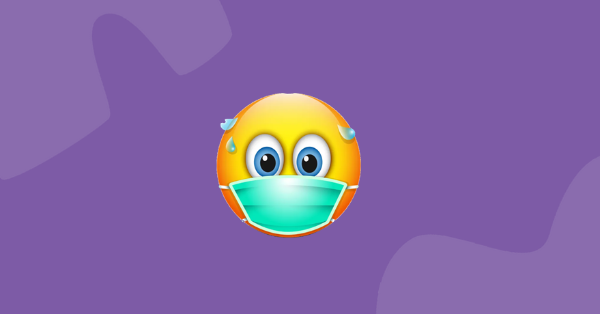
Should companies stop hiring during the coronavirus pandemic?
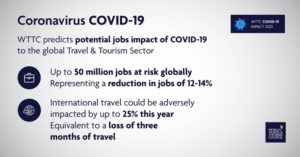
Should companies stop hiring during the coronavirus pandemic? More and more companies are using this crisis in hiring new talents in their spare time they do have.
Coronavirus is continuing its course by spreading throughout 203 nations and territories in the world. It leaves many people numb without knowing what will happen next. Many employers think whether they all should suspend their hiring process until the virus has run its course.
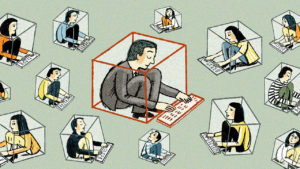
Should companies stop hiring during the coronavirus pandemic?

If you also have any vacant chair, you can adopt the same process Google is using to fulfil its hiring needs. Do it virtually! At a time when online recruiting is getting adopted so heavily, this seems to be the most logical option, as most of the recruiting process is done via phone calls and e-mail communication. It helps recruit while avoiding human contact in the wake of the coronavirus. Here are a few tips for making your recruiting process solely online.
Should companies stop hiring during the coronavirus pandemic? The crisis is the right time to have a clear thought of the future. The spare time is the time to set the goals straight.
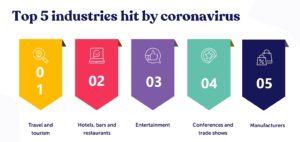
How to make online recruitment or remote recruitment?

- Candidate Outreach
Job fairs are a great source to top talent. But in this tough phase avoiding face-to-face communication isn’t suit well. So, online adopting options are the best route to travel. These days, more and more recruiters and hiring managers are turning to online methods. It let them to source and connect with potential candidates. Seeing as a vast majority of job seekers are online, that is your best bet for finding top talent. But where can you search for them?
Well. Start with social media, including LinkedIn, Facebook, and Twitter. They are the most popular social media platforms. If you tailor your messaging just right, you will be sourcing talent within no time! Get a few tips to start recruiting through social media:
- Set up a definite feed for job posts if you have many vacancies to fill.
- Utilise social media functions to get quick access to the application process.
- Ensure the people responsible for social media response are incredibly sharp when responding to candidate inquiries.
- Use hashtags to draw attention to the organisation when appropriate.
- Encourage your employees to be active on social media platforms. They can forward job openings to people in their network.
- Consider hosting online events to encourage candidate interaction with the organisation.
- Consider using the paid options offered by different social media platforms to host or boost a job post. It may include advertising or other specific job post functionalities.
- Ensure your social media pages are optimised to be found in search results.
- Use social media to seek out and proactively reach out to passive candidates.
- Utilise the data analytics tools that social media sites provide. It helps tailor your posts to garner more interaction.
Social media is the best platform for recruiters to hunt their target candidates.
- Conducting Interviews
After you have found the perfect candidates, the next comes interviewing them. Traditionally, most firms start with a phone screen, And if the person seems to fit the mould, he or she is called in for a face-to-face interview. But during this time, conducting in-person interviews may have your recruiters on edge. But with updated technology, it doesn’t have to be that way!
At first, people may be wondering whether candidates even want to conduct interviews virtually. But candidates are receptive to this method. Candidates really appreciate the opportunity to attend interview from a place that is convenient for them. There is a strong sense of appreciation from candidates when you show concern for their health, schedule or family situation. It doesn’t need to have a major disaster to implement virtual screening. They are always useful for an employer and the candidate.
Conducting virtual interviews doesn’t need too much technology, either. If you have a web camera on your computer, or your cell phone has Skype-like features, you can get the job done easily. And new technologies continue to appear in the online recruiting world.
- Get LinkedIn’s talent hub platform
LinkedIn is now allowing interviewing capabilities via its Talent Hub platform. This new benefit let users’ interview candidates at anytime, anywhere. Users can also access writing, coding speaking, and soft skills. And even check the authenticity of candidates through secure proctoring. Instead of evaluating candidates in-house, you can do everything online!
- Schedule interviews virtually
Apart from that, even scheduling interviews can be done virtually! No more playing phone tag. And no more waiting for a candidate to get out of office before calling you back to schedule an interview. Now applicants can access your calendar via Web-based applications to pick a time and date that works best for them.
If in case you want to dismiss the interview, you can also ask candidates to submit a project-based assessment. Instead of an interview, for some roles, it may be suitable to ask candidates to provide a completed project. The requirements will be created and detailed in advance by the hiring company. It shows the individual’s skills upfront and tells you a lot about the applicant by how he or she approaches the entire project.
- Head straight for assessment
One last strategy to try is to scrap the interview again and head straight for the assessment portion of the recruiting process. This step may or may not oppose the need for an in-person interview. But the idea is to shake up the hiring process by going to assessment testing promptly rather than waiting until you have an applicant (or shortlist) in mind.
This stage may involve skills-based tests, logic tests, behavioural tests, personality tests, etc. The potential benefit here is that you may discover there are more potential candidates for the role than it would have thought. Some candidate may excel at the necessary assessments, even though those same people may have been overlooked if the traditional hiring path had been followed.
While coronavirus fears continue to plague all over the world, it’s time to start looking into technology-based aspects of the recruiting process. As the world frequently becomes reliant on technology, you will at least be ahead of the curve when we all go fully digital!


What are the right ways for HR to handle coronavirus concerns in the workplace?
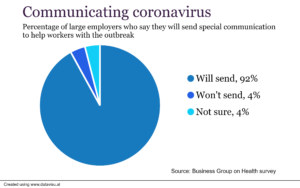
The right ways for HR to handle coronavirus concerns in the workplace

The COVID-19 coronavirus became the accelerator for one of the greatest workspace transformations of our lifetime. How we work, with whom we work, where we work, how we communicate and the ways we learn got changed completely. It has taken a few weeks for the COVID-19 to shut down most restaurants, malls, shops, and gyms. To stop spreading of this contagious disease govt encourage 88% of workers to work from home, despite whether or not they are showing symptoms of coronavirus.
It leads businesses to analyze current policies in favour of smarter ways to prevent workplace contamination and calm employee anxiety. But the larger question is: how this massive transformation will impact the workplace, you, your team, and your organization? Here are our insights on how HR should handle coronavirus concerns.

How should HR to handle coronavirus concerns in the workplace?

- Transparent communication to employees
Communication and decisive action help both to inform employees about changes in company policies and to assuage anxiety and fear. Be accurate, prompt, and honest in your communications. Outline the measures you are taking and why you are taking them.
HR to handle coronavirus concerns in the workplace is crucial at the times of a pandemic.
Adopt a multi-pronged approach for communicating to your HR team. Use electronic means but adopt physical communication methods as well.
Send an email to reassure employees you are paying close attention to the virus, and it’s spread. Explain the precautions you are taking to keep the office and your worker safe. Share reputable sources for information like the CDC and WHO. Designate a point of contact for COVID-19-related queries in the HR department.
Post notices around the workspace with the signs and symptoms to watch out for (cough, fever, and shortness of breath). And to remind workers proper cough etiquette and hygiene.
- Limit employee travel
Curb the travel plans of your employee as much as possible. Postpone or cancel business trips to any of the nations that have been granted level-3 travel restriction by the CDC.
- Cancel face-to-face meetings
Minimize person-to-person contact by cancelling face-to-face meetings. We know it’s hard to replicate the rapport you can build in face-to-face meetings, especially with new clients or business partners. But keeping everyone healthy and safe is what’s most important right now. You can go for video conferences or a good old fashion phone call.
- Make a pandemic plan
If your SMB does not have a documented pandemic plan yet, it’s the time to make one. Answer these questions:
- Can our firm operate with 25% or greater employee absenteeism?
- If illness causes high absenteeism, are workers cross-trained and able to perform multiple duties?
- Can our employees work remotely?
- What is infrastructure support needed to support a shift to employees working at home?
- Will our firm monitor, or restrict, employees travel to high-risk regions?
- What assurances should we provide to the employees, so they feel safe at work?
- How will travelling employees be brought home, particularly if they are ill?
- Is there an escalation procedure to get additional resources?
- Is there a well-trained and representative crisis management team that involves on-call staff? And do those teams know what is expected of them?
Answering there queries are essential for your company to decide the next step.
- Ask sick employees to stay home
Sick employees should stay home, point-blank. Signs of a COVID-19 infection can be mild. It takes five days on average to show up. So, workers who have been in contact with an ill person should also stay at home. Inform employees who have fevers to stay home for fourteen days to make sure they are COVID-19-free.
- Reconsider leave policies
Whether they are dedicated employees who want to put in face time or employees who have already used up their sick pay, they will show hesitant to stay home when unwell.
Do not wanting to forgo a paycheck is a powerful motivator for them coming into work, especially when you have a sore throat and case of the sniffles. But this is particularly dangerous. The symptoms for 80% of coronavirus patients are more cold-like than anything else.
It is up to HR departments and SBOs to lift any barriers to entry for unwell employees. Encourage sick workers to stay at their home, no matter how “well” they may feel by rethinking your leave and PTO policies. Even though not every business can go as far as Apple is offering unlimited sick leave to retail employees, employers should analyse what leniency they can grant regarding sick leave.
- Place restrictions on returning to work
Employees coming back from countries experiencing major outbreaks should stay home from work. These countries currently include India, China, South Korea, Italy, Iran, and many more countries around the world are added to the list.
- Consider remote work
Work from home arrangement is the best answer to stalling the coronavirus spread in the workplace. For some firms and roles, the transition is easier than others. Consider these scenarios.
- When remote work is not possible
There are some industries that rely on the presence of physical workers. In healthcare, hospitality, manufacturing, and retail WFM are not always possible. In these scenarios, the HR department and business owners have to answer difficult questions about how to protect employees, customers, and the workplace. It may mean operating with a reduced staff level or even closing during peak employee absenteeism.
- When remote work is possible but not ideal
Sales and marketing job roles still rely massively on face-to-face contact and relationship building. Provide logistical and emotional support for the cultural changes this adjustment will entail.
- When remote work is highly possible
Developer teams and off-site contractors are already well-used to collaborating virtually across geographical lines and time zones. Encourage these people to stay at home and continue to support them as usual.
Think long term
Remember that the disaster will pass. How will your workers and customers remember your businesses’ response? Resilient, prepared, and people-first leadership will carry you through to the other side.
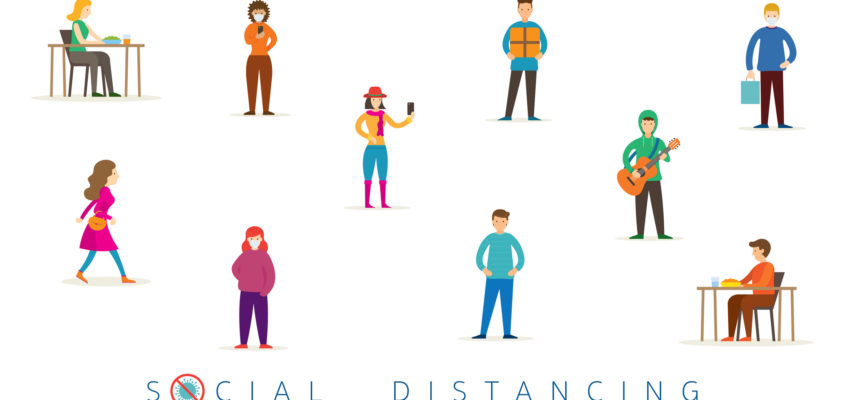
How social distancing affect one’s mental health and how to survive it?
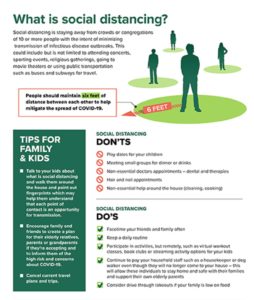
Social distancing affect one’s mental health
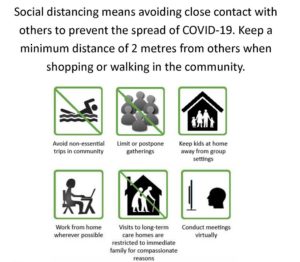
Social distancing affects one’s mental health and can lead to adverse physiological effects on people. In order to slow down the coronavirus spread, govt has adopted stringent measures to keep people apart. But mental health experts are warning that losing everyday social connections comes with psychological costs.
Fear of pandemic illness, forced isolation and a sudden spike in unemployment have hit all over the world. All these can take a significant mental health toll, especially on people who might have already experienced post-traumatic stress disorder.
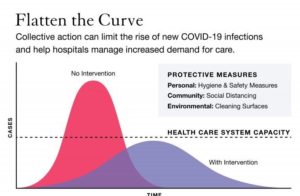
Coronavirus outbreak have greater rates of post-traumatic stress disorder symptoms
Some recent research and surveys show that people who are quarantined during a coronavirus outbreak have greater rates of post-traumatic stress disorder symptoms than those who are exposed but not quarantined. Having undergone through trauma before is a risk factor for elevations in post-traumatic stress disorder symptoms, and other symptoms like depression when someone is exposed to another life-threatening event.
During this social distancing period, others who are already dealing with mental issues and addiction could spiral while some might develop addictions, noting domestic violence and child abuse also could rise.
There are many families where there may be conflict. Or there may be abuse, and that is certainly something where being forced to stay at home can put them in a psychological pressure.
We have to find ways to stay socially connected to one another. And provide the supports so that all of us — all of us as essential citizens of this community — is here when we get to the other side of this plague.

How social distancing affect one’s mental health and how to survive it?
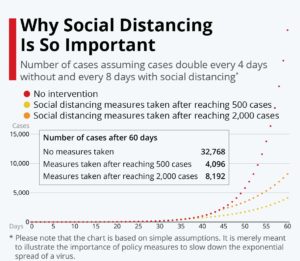
- Never let isolation numb your brain
It is important to note in your mind that isolation doesn’t just numb your brain with boredom. People start getting lethargic when they do not have positive inputs into their small worlds. We can expect depression to kick into this situation. As depression and anxiety are kissing cousins, you can expect that too. These symptoms are likely to get intense during coronavirus-related isolation.
- Have an open and transparent conversation
Open, transparent, consistent communication is one of the most important thing governments, and organisations can do. Ensure people understand why they are being quarantined first and foremost, how long it is expected to last. A big factor in the negative psychological impact is confusion about what is going on, not having clear guidelines, or receiving different messages from different organisations.
- Psychological strain and loneliness
The psychological strain of isolation manifests physiologically, too. It is one of the gravest things that humans can do to their overall well-being. In oldies, social isolation seems to worsen any pre-existing medical conditions. It can be from cardiovascular diseases to Alzheimer’s, but its ill effects aren’t limited to those over 60.
- Who all affect the isolation the most?
The people who are most at the bay of risk from the loneliness associated with COVID-19 are the people who are already at heightened risk of social isolation. Among older adults, people who earn lower-income and men experience isolation at a different level.
These individuals may not have friends or family to call, or maybe unable to do so. Some people have technology as a means of connecting people, but lower-income groups might not even have Facebook or Skype or minutes on their phone. People take that for granted. Using their mobile devices can be a strain on a few people’s incomes, particularly if COVID-19 has left them running out of a job. Minority people are going to be hit particularly hard as they often work in service industries. It increases the risk of social isolation and loneliness and coronavirus. It could pave the path to an economic and social recession.
No matter what your situation is, there are many things you can do to improve your experience while being socially isolated. We suggest exercise as a mood booster. Create structure and predictability as much as you can with those pieces of your life that you do have control over. Pursue neglected projects and get on with life. Be patient with yourself, both now and when this tough time eventually ends. People who go through an isolation period often struggle while reintegrating back into their ordinary routine. Social isolation may slowly become your routine, and losing it may still be a jolt.
Fortunately, you’re not in this alone, and you shouldn’t leave others that way, either. People who are not isolated can think about those people who were in your network that you haven’t heard from in a while. Give them a call or write a letter. Strengthen those weak connections. With any luck, you will emerge from social distancing a whole lot closer.
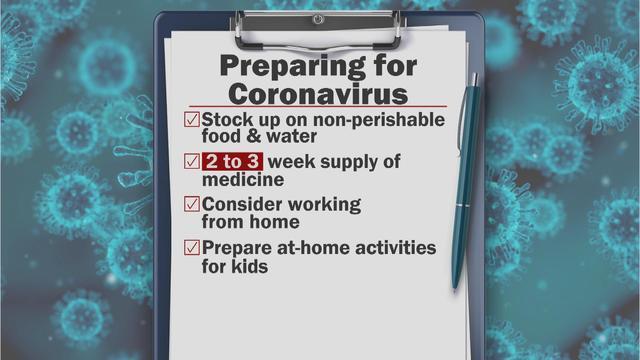
Coronavirus Pandemic – What are the right ways to work from home?
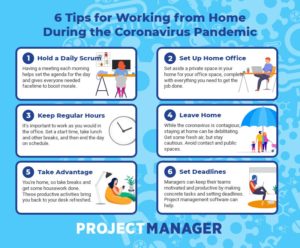
Coronavirus Pandemic – What are the right ways to work from home? Work from home on a Coronavirus Pandemic needs more concentration and dedication to be more productive.
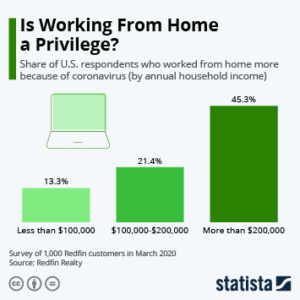
Most global companies, including industry giants, have rolled out mandatory work-from-home policies in the last few weeks amid the spread of Covid-19. And it’s realistic for most people to assume that shifting to the ‘home office’ will become the new normal for a while.
Some employees will be their first time working from home. It means figuring out how to stay on task in a new environment may not lend itself to productivity. But there are many ways to deliver results and avoid going stir-crazy, from setting up a proper workspace to the way you talk to your team. This blog is a quick read to know how to set up a good working space while working from home.

How to set up a pleasant working environment while Coronavirus Pandemic – work from home?

- Crank up the communication
Whether coronavirus is there or not, the key to working efficiently from home is clear communication with your boss. You should exactly know what is expected of you.
Have clear-set expectations for day to day communications. Ask your boss if they don’t mind having a ten-minute call to kick off the day and wrap up the day. Often, managers just haven’t thought of it.
Most people spend their working days close to their boss. It let their communication easy and effortless. But that is all out of the window with remote work. And communication breakdown will be even more likely if your workspace isn’t used to remote working. For example, your manager might not be used to managing people virtually. Or your firm might not have a ready-to-go suite of tools for remote employees, like the chat app or video conferencing app.
But even for those people accustomed to it, working from home can feel unstructured and isolating. Loneliness can make workers feel less motivated and productive.
So, when you do communicate with your manager and the team from your home, make the conversation maximum richer as face-to-face communication.
- Treat it like a real job.
There is also some timeless Work From Home tips to call upon. For example, just because you can lounge round in your pyjamas doesn’t mean you actually should. Take a shower and get dressed. Treat it like a real job.
If you have no home office, do as much as you can to generate an ad hoc, bespoke space exclusively for work purpose. Without a well-equipped home office space when remotely working can cause a temporary decrease in productivity.
So, instead of lying on the bed with a laptop, try something deeper. The fix could be something very simple as moving a nightstand into a corner far away from distractions. You can plop down your computer and sitting in an upright chair like you would at your office desk. It also serves as an essential signal to those who live with you that you are ‘at work’.
- Be inside your own boundary
Create your own boundaries within your home that your family members understand you are working. With a dedicated workspace where you can focus, it becomes easier to unlock the benefits of remote work.
Yet it’s also vital to bookend your day. You should have the ability to unplug after work. If you cannot commute or enter and leave a physical home office provides a clearer boundary to the workday. It helps you have the right mindset like a twenty-minute coffee in the morning and then exercise right after the work to open and close the day.
Even if childcare is not an issue, it is still easy when you are home to think ‘Oh! I have laundry to do, let me do it real quick and so on. You have to put yourself in a mind-frame that you are really working.
Still, even with these tools, the abrupt and enforced nature of the transition from office space to a home environment could leave you struggling to get accustomed to the change. The coronavirus is pushing everyone into working from home, which is extreme to many people.
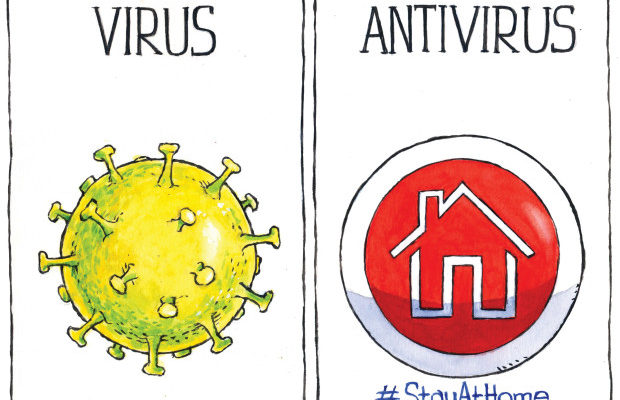
How are social distancing works reducing the transmission of the virus?

How are social distancing works reducing the transmission of the virus?

Social distancing measures to wane the spread of the novel coronavirus are in place worldwide. These guidelines are for everyone around the world.
As per the strategy, we all need to reduce our contact with others. It will have impacts in terms of mental health and loneliness, especially for the elderly and other vulnerable groups.
So why should we follow actions that seem so extreme? The answer is simple. Social distancing works. It demotes transmission of the virus effectively. It also dwindles the impact on already stretched healthcare services.
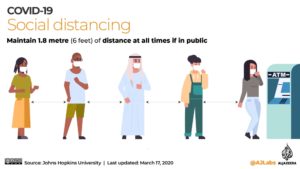
How social distancing strategy impacts on people?
Social distancing is one of the effective strategies to reduce the novel coronavirus. Without these steps, an individual with COVID-19 can get expected to infect around three others throughout their infection.
One “generation” of virus infection takes around one week. After one week, that one infected individual will have become four infected individuals (the original infected, plus the three individuals they have infected).
After two to three week, each of the three newly infected individuals can be expected to cause three new infections. It leads to thirteen infections in total.
If this compounding effect continues, after six weeks, the initial infected person will have started a chain of transmission that has led to more than a thousand infections.
What if everyone keeps social distancing?
If everyone in the population lessens their contacts by one third, then each infected individual will only infect two others throughout their infection. It means that after one week, there will be three infected individuals in total.
It is similar to the first scenario. But, if everyone reduces their contacts by one third, after six weeks, the chain of transmission will have caused 127 infections. It is still a large number of infected individuals. But it is substantially fewer than the scenario of over one thousand infections that occurs without social distancing.
Of course, widespread control measures have significant effects on our lives. In China, case numbers have now fallen dramatically due to severe interventions. It is the outcome of social distancing measures they have adopted. They strictly lock down all the corona affected parts of the country. And they used all the possible methods to let people stay at home and low down the spread.
Measures like those must be enforced in the same way in other countries too. If everyone adopts them, social distancing efforts to reduce transmission can still be expected to have significant effects. Social distancing is particularly crucial. We do not know how much the daily transmission occurring from people who is displaying no or few symptoms.
As a result, we shouldn’t try and self-determine whether we pose an infection risk or not. Instead, all of us should take social distancing seriously. We should support each other to follow these guidelines during this challenging time.
Let us face it
The treatment of this pandemic worldwide has not been perfect. A couple of weeks ago, Donald Trump asserted that COVID-19 is no worse than influenza. It has been clear to experts that the death rate is ten times more powerful than other seasonal viruses or H1N1 “swine flu” virus that swept around the world in 2009.
But let us face it. When this virus surfaced in early January, no one of us could have imagined the situation we are in now. The best thing we can do going ahead is to put these things behind us.
This novel coronavirus will continue to have a greater impact over the next weeks and months, most possibly beyond that. While looking out for one another, especially those in vulnerable groups, we should do everything we can to stop this virus. Social distancing is of clear public health importance.

Many companies to furlough more than a thousand employees amid coronavirus fallout
Many companies to furlough more than a thousand employees amid coronavirus fallout. Job loss is there in the coming days with coronavirus epidemic.

Coronavirus spread rapidly around the world since it was first revealed in China less than three months ago. It has dealt an unparalleled shock to the global economy.

As governments are attempting to stabilize their economies, even the top-level companies facing a tough time. They navigate through many altered landscapes. It let millions of people face job losses and interrupted good and services. Following are the announcements from two businesses encountering fallouts due to the dangerous virus outbreak.
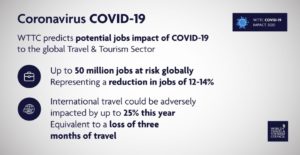
Marriott International about to furlough thousands of employees

The largest hotel company in the world, Marriott International Inc., announced Sunday it would furlough their corporate employees soon. More than thousands of employees are working in their headquarters in the U.S and across the globe. They will get furloughed as the company is forced to scale back due to the coronavirus pandemic. This decision, first reported by The Wall Street Journal Sunday, adds to massive recent payroll reductions that began last week.
Marriot is the world’s largest hotel company. Like many of its peers, it is trying to cope up with a plunge in demand due to the coronavirus.
On Sunday, Marriott said that they are furloughing about two-thirds of its 4,000 corporate staffs at its headquarters in Bethesda, Maryland. It is also furloughing around two-thirds of its corporate workers abroad. Marriot has about 174,000 employees globally. The furloughs are assumed to start in April and last up to 90 days.
Marriott added that it hoped to bring back their staff when the demand for hotel and travel accommodations has resumed, and the threat of coronavirus has subsided.
The firm stated Donald Trump, the president of the united states last week that it has begun reducing employees’ hours and starting to furlough what could eventually become tens of thousands of workers at its hotels. It is a big crisis for such a big company where more than lakh of people wear a Marriott name badge globally.
Furloughed workers in the U.S. will get 20 per cent of their salary while those who are still currently employed are facing heavy pay cuts and reduced work hours, the company informed President Trump last week.
U.S. hotel businesses have been seeking $150 billion in direct aid from the government for their employees.
Marriott’s chains and franchisees have owned 7,300 properties around the globe. It covers 30 brands over the different parts of the world, including W Hotels, Courtyard and Sheraton under its 92-year-old umbrella.
President and CEO of Marriott Arne Sorenson also enumerated several other corporate cuts in a video posted to the company’s Twitter on Wednesday that foreshadowed the furloughs.
Sorenson declared that the pandemic had a “more rigorous and sudden financial impact on our business than Since COVID-19 started spreading more swiftly from Wuhan, China earlier this year. Sorenson said that business in China has declined 90 per cent and was ranking in “75 per cent below normal levels” in other parts of the world. It forced hundreds of hotel closures across the globe.
As a result, Sorenson, who has been healing from pancreatic cancer, and Executive Chairman Bill Marriott will not receive salaries for 2020. And his senior executive team is taking a 50 per cent pay cut, according to the company.
3,500 Halliburton staffs in Houston furloughed due to difficult oil market
Headquartered in HOUSTON, Texas (KTRK), Halliburton announced it is issuing a compulsory furlough to 3,500 staffs at its North Belt facility in Houston.
Beginning on March 23, employees on the mandatory leave of absence will work one-week off, one-week on for up to two months. Employees will get paid for the weeks that they are on, but will not get paid for the weeks they are off. The benefits and health insurance of the employees will remain in place.
This decision comes due to recent challenges in the oil market after the coronavirus outbreak.
Helps could soon be on the way, though.
On last Tuesday, the Trump administration said they are about to send checks to the public within the next two weeks. They want to help people through the financial distress of the coronavirus crisis.
Congress still has to approve the plan.
It is not exactly clear about how much money would be received, but Senator Mitt Romney has suggested $1,000.


Job interviews during the deadly coronavirus pandemic

Job interviews during the deadly coronavirus epidemic. A remote Job interview during coronavirus pandemic is the best option for overall safety for all involved.
The victims of the novel coronavirus pandemic are increasing after each passing day. It leads most companies around the world, asking their employees working from home. It avoids the commute to the office and the victim’s interaction with other employees, which slow the spread. As a result, recruiters and managers are getting forced to move their hiring processes online. Job interviews during the deadly coronavirus pandemic are mostly remote.
The most immediate change will likely be companies switching in-person interviews to online interviews through video calls. While the core of those interviews is ultimately the same, video interviews differ from in-person meetings. You may have a lot of questions in your mind, including:
- What are the best practices for video interviews?
- What job may seekers encounter over the next few weeks?

Let us dive into the blog to know more about Job interviews on a coronavirus pandemic.
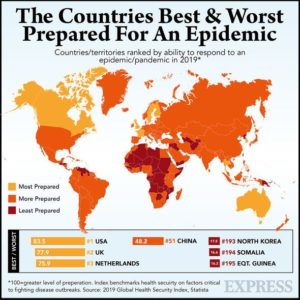
- What you should expect
Companies are always proud when they can fill positions quickly. They may be less bothered about that measure during the coronavirus pandemic, though. In other words, firms may take longer to make you an offer, especially for senior-level positions.
It would be shocking if someone made an offer to a senior candidate without meeting the person. But in this situation, we got no other options than getting the person through several interviews rounds until they can meet the person. Another issue is that it’s likely more challenging to get all the key stakeholders to weigh in on a candidate to make a decision.
If everyone is going out of the office, working remotely and not meeting regularly may be arduous to get everyone on the same page.
While nobody wants to take part in lengthy hiring processes, you need to remember that we are currently dealing with unprecedented circumstances. If you want to land a job, you will need to continue engaging with these processes, no matter how long it takes to get considered for roles.
- Do a thorough research
Fortunately, the first move in preparing for video interviews is not associated with what you did before the beginning of the epidemic. The key is to do as much homework and research ahead of an interview as possible.
During your research, it’s essential to find potential topics of conversation with interviewer or interviewers. Video interviews tend to involve less small talk and be shorter than in-person meetings. So, it is even more vital that you make an effort to form a bond with the recruiter on the other side of the screen. For example, you can look for things to talk about on the interviewer’s LinkedIn profile. Or, you can mention anything they said on a podcast or anywhere else.
- Prepare your space and practice
Unlike in-person interviews, video interview often opens a window into your personal life. As a human, we make decisions about what people’s spaces or homes look like. You shouldn’t let hiring managers see a messy surrounding piled up with mountains of waste papers or crooked picture frames.
Instead of it, opt for a neutral background with good lighting. Also, ensure the camera is at eye level to avoid any unflattering angles.
One of the benefits to video interviews is that you can have notes in front of you or around your workplace. The person doesn’t have to know about that. Moreover, if you have dual monitors, you can keep one for the interview and the other one for your notes.
For you don’t have a proper space or a laptop with a built-in camera, local libraries can often be a one-stop-shop for your job hunt. They may even have a peaceful space for you to sit with your laptop for the interview. Alternatively, you can ask any local co-working spaces if they have a room and equipment to rent.
Lastly, you will want to practice talking to the camera, which is more complicated than it seems. You can put a pair of googly eyes right near the camera lens. It encourages you to look at the camera during the interview session. Never look down, off to the side or elsewhere. You have to ensure you have good eye contact.
- During the interview
While many of the in-person or video job interview questions will be the same, you should ask for specific information about the firms hiring timeline. You should also ask if the position will be remote until the outbreak is over and how the firm will proceed with the onboarding process if they continue to work remotely for a month or two.
It’s also crucial during a video interview to tell the recruiter how interested you are in the opportunity. You should thank him for their time to interview you. Tell them how impressed you are with the team and say how honoured you are to get considered for the position. Never leave any doubt in his mind that you want to be there.
Additionally, you should expect the unexpected during these next few weeks while people are working from home. While everyone will want to continue with their professional tasks, life can sometimes get in the way when children, pets or even the doorbell intrude on a video interview. The best thing you can do is showing grace and hope they will return the favour.
The Bottom line
The coronavirus is shaking up how recruiters operate. The recruiters and companies are moving job interviews to video. In some ways, the switch has made their jobs easier since many of their clients are working from home. Instead of waiting to hear back from people who may be at meetings or walking around the office, the clients are at home and available to talk when needed. The downside is that a face-to-face meeting is still needed to secure larger positions, meaning recruiters may need to wait to cash in on fees until the outbreak is over.

Here are the eight questions employer should ask about coronavirus

What employer should ask about coronavirus. Fundamental question an employer should ask about coronavirus to ensure a safer workplace and the sanctuary of the employees.

The coronavirus outbreak originated in Wuhan, China. It has spread to at least 65 countries and sickened more than 89,000 people, with more than 3,000 deaths, as of March 2. Governments have closed their borders and imposed quarantines, and companies have banned travel. The human and economic impact on businesses has been stark.
This epidemic is the right moment for companies to review the strategies, policies and procedures carefully. They have to put them in place to protect employees, customers and operations for now and future epidemics. Here are eight questions that every employers should ask about coronavirus and respond to, the spread of the virus.
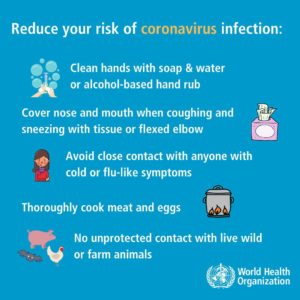
Eight questions that every employer should ask about coronavirus

- How can we protect our employees from the exposure?
The coronavirus that causes COVID-19 has thought to spread mainly through respiratory droplets produced from coughing and sneezing. It seems to spread quickly. It may also be possible to get infected by touching a contaminated surface or object and then touching one’s mouth or nose. The Centers for Disease Control and Prevention advises that employees should:
- Stay at home if they have respiratory symptoms (coughing, sneezing, shortness of breath) or a temperature above 100.4 degrees.
- Leave work if they develop any of these symptoms while at the workplace.
- You should shield coughs and sneezes only with a tissue, elbow or shoulder.
- Wash both your hands often with soap and water for a minimum of 20 seconds or use an alcohol-based hand sanitizer.
Since hand-washing is one of the most powerful defences, employers need to ensure that employees have ready access to washing facilities. And those should be kept well stocked with soap and paper towels. Alcohol-based hand sanitizers and sanitizing wipes should get distributed throughout the workplace. And all frequently touched surfaces, including work stations, countertops and doorknobs should be routinely cleaned.
- When should we exclude employees or visitors from the workplace?
As discussed above, employees should stay home or go home if they have symptoms of coronavirus infection. Managers should not hesitate to send workers who present with COVID-19 symptoms home. Besides, employees or visitors who are symptomatic or at high risk for COVID-19 should be kept separate from the regular staff. They must leave the workplace and obtain medical evaluation while minimizing their public exposure.
Public health organizations suggested that companies bar employees or visitors from coming to the workplace. It is essential for 14 days after a “medium” or “high-risk” exposure to the virus. It helps to avoid staying in close contact with someone who is known to be infected or having travelled from a high-risk region.
- Should we revise our benefits policies?
The number of employees unable to work is increasing. The reason is either because they are sick or because they must care for others. It means that it is the time companies should review their paid time off and sick leave policies. It will give employees confidence that they will not be penalized and can afford to take sick leave. It is an essential tool in encouraging self-reporting and reducing potential exposure.
While few firms outside of Asia have closed their worksites because of the epidemic. About half the Chinese companies had shut down worksites at least temporarily. Such closures will become more common outside of Asia if the epidemic continues on its current course.
- Have we maximised employees’ ability to work remotely?
Many jobs require employees to be physically present. But work including meetings can be done remotely should be encouraged if coming to work or travelling there risks exposure to the virus. For instance, videoconferencing is an excellent alternative to risky face-to-face meetings. Nearly 60% of the employers had increased employees’ flexibility for remote work (46%) or at least plan to (13%).
- Do we own reliable systems for real-time public health communication?
Dangerous rumours and worker fears can spread as quickly as a virus. Companies must reach all workers with regular, internally coordinated, factual updates about infection. You should make them aware of how to control the disease and its symptoms. Be clear with the company policy regarding remote work and circumstances. Let them aware of which employees might be excluded from or allowed to return to the workspace. The emergency response team should vet these communications. And they should be carefully organised to avoid inconsistent policies get communicated by different managers or functions. If you don’t have a current, universal contact capability already, now is an excellent time to create one.
- Should we revive our policies on international and domestic business travel?
Sixty-five per cent of companies are now restricting travel to and from Asia. It is essential to limit employee business travel from areas where COVID-19 is most prevalent. It can prevent both illnesses and avoid loss of productivity due to quarantine or employee exclusion from the workplace after the trip. Companies must track the CDC Travel Health Notices and the State Department Travel Advisories. It can determine what business travel should be cancelled or postponed. The CDC currently recommends that travellers avoid all nonessential trip to China, South Korea, Italy and Iran.
- Should we cancel or postpone scheduled conferences or meeting?
We have already seen scattered reports of cancelled in-person conferences and meetings. And we expect more reports in the upcoming months: 47% of employers are about to cancel planned meeting or conferences to North American employees in selected countries. Local health departments will declare guidance about whether events should be cancelled in a particular area. All conference organizers must provide information on diminishing the chance of infection. And they should assure that proper hand-washing facilities or hand sanitizers are readily available.
- Are supervisors adequately trained?
Sixty-five per cent of companies surveyed that have employees in China are training supervisors about the implications of COVID-19. And 34% of those with employees in North America report they are actively training or planning to train their managers. Whatever form the training takes, managers should have ready access to relevant information. And must know who to contact within the firm to report exposures. Managers or other designated persons in the company should promptly notify local health authorities about any suspected exposure.





